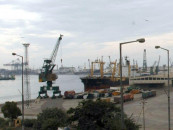External sector fares well but challenges remain
In absence of adequate domestic supply, demand can only be satisfied through imports

Financial year 2020-21 (FY21) concluded with three remarkable achievements – highest-ever merchandise exports of $25.63 billion, largest-ever remittances of $29.37 billion and lowest current account deficit of 0.6% of gross domestic product (GDP) in recent years (State Bank data).
If 3.94% of GDP growth is added to these figures, the economy seems to be in a pretty good shape.
Since August 2018 or FY19, when the present government took office, there has been a creditable progress in bringing down the external deficit. From a whopping $19.89 billion (6.1% of GDP) in FY18, the current account deficit fell to $13.43 billion (4.8% of GDP) in FY19, then shrank to $4.45 billion (1.7% of GDP) in FY20 and dropped further to $1.85 billion in FY21.
During the first two years, FY19 and FY20, the current account deficit compression was underpinned primarily by two factors – cuts in imports and increase in remittances.
FY19 saw a downturn in imports to $54.79 billion from $60.79 billion in FY18 and further to $44.55 billion during FY20. At the same time, the remittances went up from $19.91 billion in FY18 to $21.84 billion in FY19 and further to $23.13 billion in FY20.
While the remittances continued to be on the upward trajectory into FY21, the last financial year also saw an 18% growth in exports after back-to-back contractions during the preceding two years.
At the same time, the downturn in imports gave way to 26% growth in sync with the GDP expansion.
If seen from another perspective, however, the economic recovery seems to be precariously placed.
The current account balance remained in surplus in the first two quarters of FY21 at $865 million and $382 million respectively. However, in the following two quarters, it turned negative with deficit of $617 million and $2.48 billion (including $1.64 billion in June alone) respectively. Thus, FY21 ended with a current account deficit of $1.85 billion.
To assess why the external balance turned negative during the last two quarters of FY21, we need to look at its key components.
From Q1 to Q4 of FY21, the remittances were recorded at $7.14 billion, $7.06 billion, $7.96 billion and $7.21 billion respectively. So, the remittances remained relatively stable throughout the year, except for Q3 when they shot up to nearly $8 billion.
Notwithstanding their useful contribution to the national economy, the remittances don’t constitute a reliable barometer by which we can judge the health of an economy, because they primarily turn on factors which are exogenous to the economy.
What the government can do is to facilitate overseas Pakistanis in sending home their hard-earned income. In this connection, the Roshan Digital Account is a step in the right direction.
During the four quarters of FY21, $5.35 billion, $6.46 billion, $6.89 billion and $6.92 billion respectively were earned in export revenue. Thus, FY21 saw an increase in exports quarter by quarter.
However, the rate of increase was not consistent. Quarter-on-quarter, exports went up 20.7% in Q2, 6.6% in Q3 and 0.5% in Q4.
Likewise, during the four quarters of FY21, $10.63 billion, $12.56 billion, $14.33 billion and $16.25 billion respectively were paid in the import bill. Thus, quarter by quarter, imports kept on rising – 18.1% in Q2, 14.1% in Q3 and 13.4% in Q4.
Twin deficit
In Pakistan, as in most other countries, trade deficit is a major contributor to the current account deficit. Whenever the trade deficit goes up, the external deficit also goes up.
However, in FY21, the positive relationship between the two deficits didn’t hold true. Although the trade deficit increased to $31.05 billion from $23.16 billion, the current account deficit went down to $1.85 billion from $4.45 billion.
The reason was more than $6 billion increase in remittances. But as stated above, being an exogenous factor, the remittances can’t always be counted. So, efforts to correct the external deficit must rely on checking imports or increasing exports.
The short-run measures to cut back on imports take the form of imposition of regulatory duties, increase in normal customs duties, placing quantitative import restrictions, or restricting access to foreign exchange. These import compression measures have the essential effect of making foreign products more expensive.
The efficacy of such measures depends on the price elasticity of import demand. Products which are deemed essential by consumers, such as food, etc, or industrial buyers such as machinery and raw material, tend to be relatively price inelastic, which means the price escalation doesn’t have an appreciable impact on bringing the imports down.
The downside of such measures is that they cause inflationary pressures and hit both the consumers and exporters, who rely on imported inputs.
At all events, import compression and the overall growth deceleration go together as the efforts to contain imports tend to slow the pace of economic growth, which in turn reduces import demand.
Larger economic pie
In the long run, the only credible way to contain imports is to increase the size of economic pie. Import demand represents the difference between domestic supply and domestic demand. This will entail increased investment – domestic or foreign – in the real economy.
In the absence of increase in domestic product supply, the economic growth will invariably raise import demand and thus add to the external deficit. This has been Pakistan’s dilemma, where a relatively high economic expansion is accompanied by a big external deficit.
Thus, in FY21 a modest rate of economic growth caused nearly $12 billion increase in imports.
A relevant factor is Pakistan’s demographic credentials. A large and predominantly young population means an increasing demand for goods and services, which in the absence of adequate domestic supply can only be satisfied by imports.
The increase in the size and quality of domestic products is also the primary recipe for long-term increase in exports, otherwise we will remain an exporter of primary products, whose prices are not only volatile but also tend to deteriorate over the long term.
In the short run, better marketing, especially the use of online product promotion and sales, can be instrumental in increasing exports.
The writer is an Islamabad-based columnist
Published in The Express Tribune, July 26th, 2021.
Like Business on Facebook, follow @TribuneBiz on Twitter to stay informed and join in the conversation.


















COMMENTS
Comments are moderated and generally will be posted if they are on-topic and not abusive.
For more information, please see our Comments FAQ